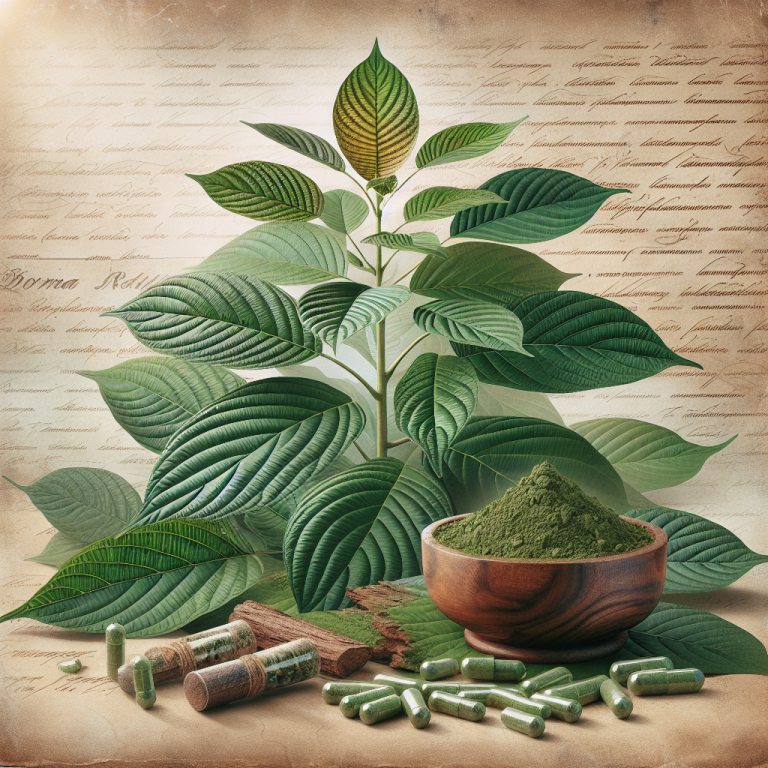
Understanding Kratom: The Basics
Kratom, a tropical tree native to Southeast Asia, has gained attention worldwide. Its leaves contain compounds that can affect the mind and body. People have started using kratom capsules for various purposes, ranging from pain relief to mood enhancement.
Initially used in traditional medicine, kratom now finds its way into global markets. However, understanding its impact on those markets involves more than just knowing its benefits. Various factors, including regulations, consumer trends, and market dynamics, contribute to the kratom conversation.
The Rise of Kratom in Modern Culture
Kratom has transitioned from a local herbal remedy to a global product. The growth of online stores and health awareness has played a significant role in this transition. As consumers look for natural alternatives to pharmaceutical drugs, they have turned to kratom.
Unlike many conventional medicines, kratom is often deemed as safer, prompting its increasing popularity. Social media has further amplified discussions around kratom, allowing users to share experiences and benefits. When people talk about natural wellness, kratom often finds itself in the spotlight.
Global Market Trends for Kratom Capsules
The Market Overview
Kratom capsules have carved out a niche in the wellness market. Currently, the market is estimated to be worth several million dollars, showing robust growth year over year. Various companies are entering this space, contributing to a diverse product range.
In 2023, the global kratom market is projected to continue expanding. This growth is driven by a growing consumer base seeking herbal alternatives. Additionally, innovations in product development make kratom increasingly appealing.
Major Regions Engaging with Kratom
The primary markets for kratom capsules include North America, Europe, and parts of Asia. In North America, the United States takes the lead, thanks to significant consumer interest. Europe, while still emerging, shows considerable growth potential. Each region has unique characteristics impacting kratom’s acceptance and usage.
| Region | Market Size (Est.) | Growth Rate (Annual) |
|---|---|---|
| North America | $XX million | XX% |
| Europe | $XX million | XX% |
| Asia | $XX million | XX% |
The Factors Driving Kratom's Popularity
Health Benefits and User Experiences
Many users advocate for kratom capsules due to their ease of ingestion and consistent dosing. Anecdotal evidence suggests that kratom can alleviate pain, reduce anxiety, and improve mood. While these claims are largely personal, they resonate with many seeking natural remedies.
As people increasingly prioritize mental health, the demand for effective solutions rises. Kratom capsules fit this niche, offering a natural alternative to traditional treatments. Numerous testimonials reinforce these perceptions, further fueling consumer interest.
E-commerce and Accessibility
Online shopping has transformed how consumers access products, including kratom. Websites specializing in herbal supplements cater to a growing audience. The convenience of receiving kratom capsules delivered to one's doorstep simplifies the buying process.
Moreover, social media platforms play a crucial role in spreading awareness. Influencers and health enthusiasts share their kratom experiences, lowering the stigma around herbal supplements. As more people become curious, the market continues to grow.
Regulatory Landscape Affecting Kratom
Current Legislation
The legal status of kratom varies significantly across countries and even within regions. In the United States, for example, the FDA has not approved kratom for medical use. However, it remains legal in many states. This complex patchwork of laws creates confusion among consumers and businesses.
Countries like Thailand have legalized kratom with specific regulations, reflecting a recognition of its traditional use. Understanding local laws is crucial for anyone looking to enter the kratom market.
Future Regulations
As the kratom market expands, regulatory scrutiny will likely increase. Policymakers will need to address safety concerns and standardization. Some argue for a regulated market, similar to cannabis, to ensure product safety and quality. This approach could legitimize kratom and protect consumers.
Stakeholders in the kratom industry must stay informed about potential changes. Proactive engagement with regulatory bodies can help shape a favorable future for kratom.
The Economic Impact of Kratom Sales
Creating Jobs and Supporting Local Economies
The kratom market opens up opportunities for job creation. Producers, distributors, and retailers all contribute to economic activity. In regions where kratom is grown, local farmers benefit from the demand for their harvests.
Additionally, the growth of online kratom sales supports logistics and e-commerce jobs. This multifaceted impact strengthens local and national economies.
Global Trade
Kratom's increasing demand has spurred international trade, particularly between Southeast Asian countries and Western markets. Exporting kratom can be profitable for producing nations, fostering economic relationships. However, this global trade is also subject to ethical considerations and sustainability.
Sourcing kratom responsibly becomes essential in ensuring long-term viability for both farmers and consumers. A transparent supply chain will enhance consumer trust and protect the environment.
The Environmental Considerations of Kratom Cultivation
Sustainable Practices in Kratom Farming
As demand for kratom grows, so does concern over its environmental impact. Unsustainable farming practices can lead to deforestation and biodiversity loss. Therefore, promoting sustainable cultivation methods is crucial for the future.
Certifications and sustainability initiatives can guide farmers toward eco-friendly practices. Educating consumers about the importance of supporting sustainable products can further this mission.
The Role of Consumers in Sustainability
Consumer awareness plays a pivotal role in promoting sustainability. Shoppers can choose to buy from brands that prioritize ethical sourcing and eco-friendly practices. This conscious choice encourages producers to adopt better practices for the environment.
Challenges Facing the Kratom Market
Misinformation and Stigma
Despite its popularity, kratom still battles stigma. Many misconceptions exist regarding its safety and efficacy. Misinformation can deter potential users and create barriers to acceptance.
Brands need to invest in education and transparency. Providing accurate information about kratom's uses and potential risks will help build consumer confidence.
Competition from Other Alternatives
Kratom faces competition from various herbal supplements and pharmaceutical alternatives. As the wellness market grows, consumers have more options. Competitors vying for market share may impact kratom's growth if businesses fail to differentiate their products effectively.
Consumer Demographics and Preferences
Who is Using Kratom?
Kratom appeals to diverse demographics, including young adults, fitness enthusiasts, and individuals seeking natural remedies. However, understanding the primary user groups helps tailor marketing efforts.
Research suggests that many consumers are health-conscious individuals who prefer natural alternatives. Therefore, marketing messages should resonate with these values to capture their attention.
Preferences in Consumption
Kratom capsules offer a convenient and discreet option for users. They eliminate the taste of raw kratom, which many find unpleasant. Formulating specific blends or strengths may also attract consumers with varied needs.
Designing innovative products, such as flavored capsules or unique blends, can capture new audiences. Engaging with users to understand their preferences will ultimately benefit brands.
Marketing Strategies for Kratom Brands
Building Trust Through Education
As previously mentioned, misinformation remains a significant challenge. Brands should focus on educating their audience about kratom, its uses, and safety precautions. Blogs, videos, and webinars can serve as valuable resources.
Creating partnerships with health professionals may also enhance credibility. When consumers see trusted sources recommending kratom, they may feel more confident in trying it.
Leveraging Social Media
Social media platforms offer a unique opportunity for kratom brands. Engaging content can build a community of loyal customers. Sharing user testimonials, educational content, and product information can foster connection and trust.
Additionally, targeted advertising on social media can reach specific demographics. By aligning products with the interests of potential users, brands can maximize their marketing efforts.
The Future of Kratom in Global Markets
Emerging Trends
As the kratom market evolves, we can expect to see emerging trends. Customization of products, such as personalized blends, may gain traction. Consumers increasingly seek tailored experiences that meet their unique needs.
Moreover, advances in technology may streamline the supply chain, improving product quality and accessibility. Investing in innovative solutions will be crucial for any brand looking to thrive in this changing landscape.
Long-term Viability
To ensure long-term viability, all stakeholders must engage in responsible practices. This includes sustainable farming, ethical sourcing, and transparent marketing. Advocating for consumers' health and safety will build trust and foster brand loyalty.
As regulations evolve, adaptability will be key. Brands that stay informed and act accordingly will position themselves as leaders in the kratom market.
Frequently Asked Questions (FAQs)
1. Is kratom safe to use?
While many users report positive effects, kratom safety varies. It's essential to consult with a healthcare provider before use, especially for individuals with existing health conditions.
2. Can I develop a tolerance to kratom?
Yes, regular use of kratom may lead to tolerance. Users often need to adjust their dosages over time.
3. What are the side effects of kratom capsules?
Common side effects include nausea, dizziness, and constipation. Some users may experience more severe effects, so starting with a low dose is advisable.
4. Is kratom legal in my country?
Kratom's legality varies by region. Always check local laws before purchasing or using kratom.
5. How should I store kratom capsules?
Store kratom capsules in a cool, dry place away from direct sunlight. This helps maintain potency and quality.
6. Can I combine kratom with other substances?
Mixing kratom with other substances, such as alcohol, can be dangerous. Always consult a healthcare provider before combining any substances.
7. How long does kratom take to work?
Effects typically begin within 30 minutes to an hour after ingestion, but this can vary depending on the individual and dosage.
8. Are there any age restrictions on kratom use?
Some sellers may restrict sales to individuals 18 years old or older. Always verify policies with the retailer.
9. Can kratom help with anxiety and depression?
Some users report alleviation of anxiety and depression symptoms, but scientific research on this claim is limited. Consultation with a healthcare professional is recommended.
10. What should I look for when choosing kratom products?
Opt for products from reputable companies. Look for third-party lab testing, transparent sourcing, and positive consumer reviews.






